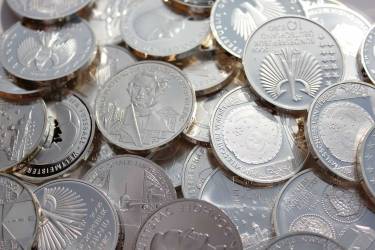Oil
- ExxonMobil believes that a $100 per barrel oil price could be a "black swan" event for the market this year
-
ExxonMobil suggests this could be triggered by geopolitical tensions or an accelerated replenishment of strategic reserves in the US. The company stands to benefit significantly from rising oil prices, given its record-high Q2 production of 4.6 million barrels per day.
-
Supply risks persist, contributing to the recent rise in crude oil prices. Despite the increase in global benchmarks, the price of Urals crude has fallen by $3-$4, allowing India to purchase Russian oil even more cheaply than market factors would suggest.
-
India has offered to eliminate tariffs on US goods, aiming for a trade agreement that would lower its current 50% tariffs. However, Donald Trump has indicated that it's now too late and that the trade imbalance would not be rectified.
-
During a recent summit in Beijing, a meeting between Putin and Indian Prime Minister Modi confirmed continued cooperation between the two nations.
-
An upcoming OPEC+ meeting this weekend will determine production targets for October and a strategy for the coming months. After several months of increasing production targets to reverse voluntary cuts, OPEC+ is expected to maintain current production levels.
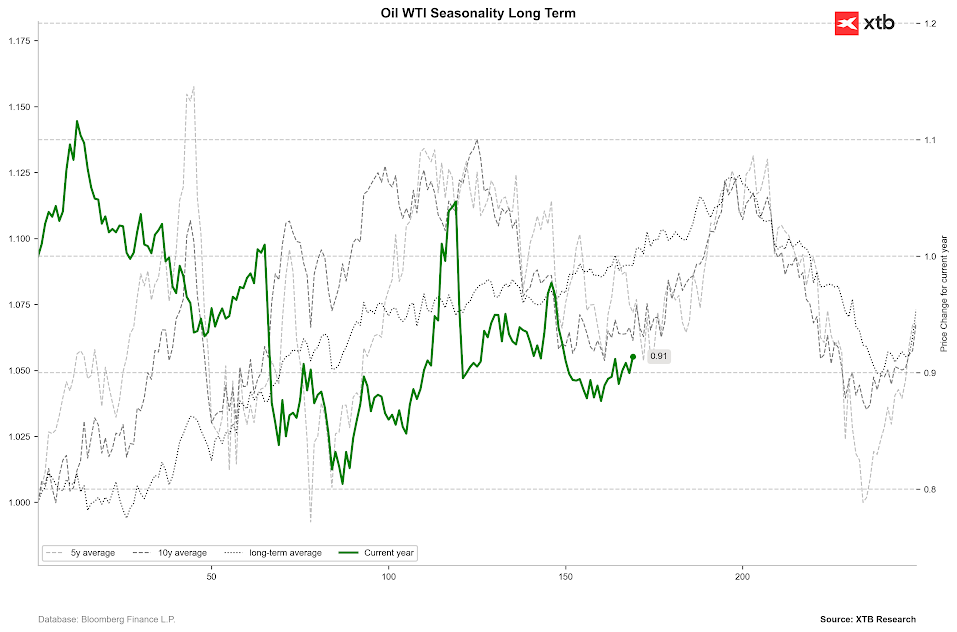
Crude oil is starting to rebound, in line with market seasonality. The local peak is theoretically expected around the 200th trading session of the year, which would place it in late October. Source: Bloomberg Finance LP, XTB.
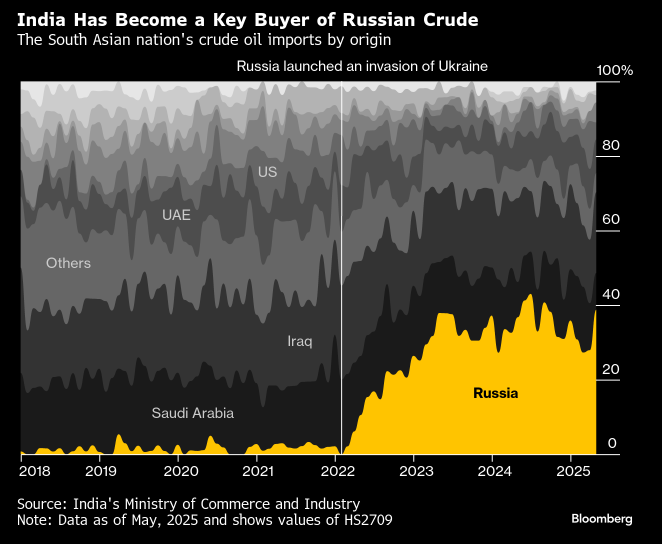
India is not only continuing to buy Russian oil but is also increasing its purchases. Source: Bloomberg Finance LP
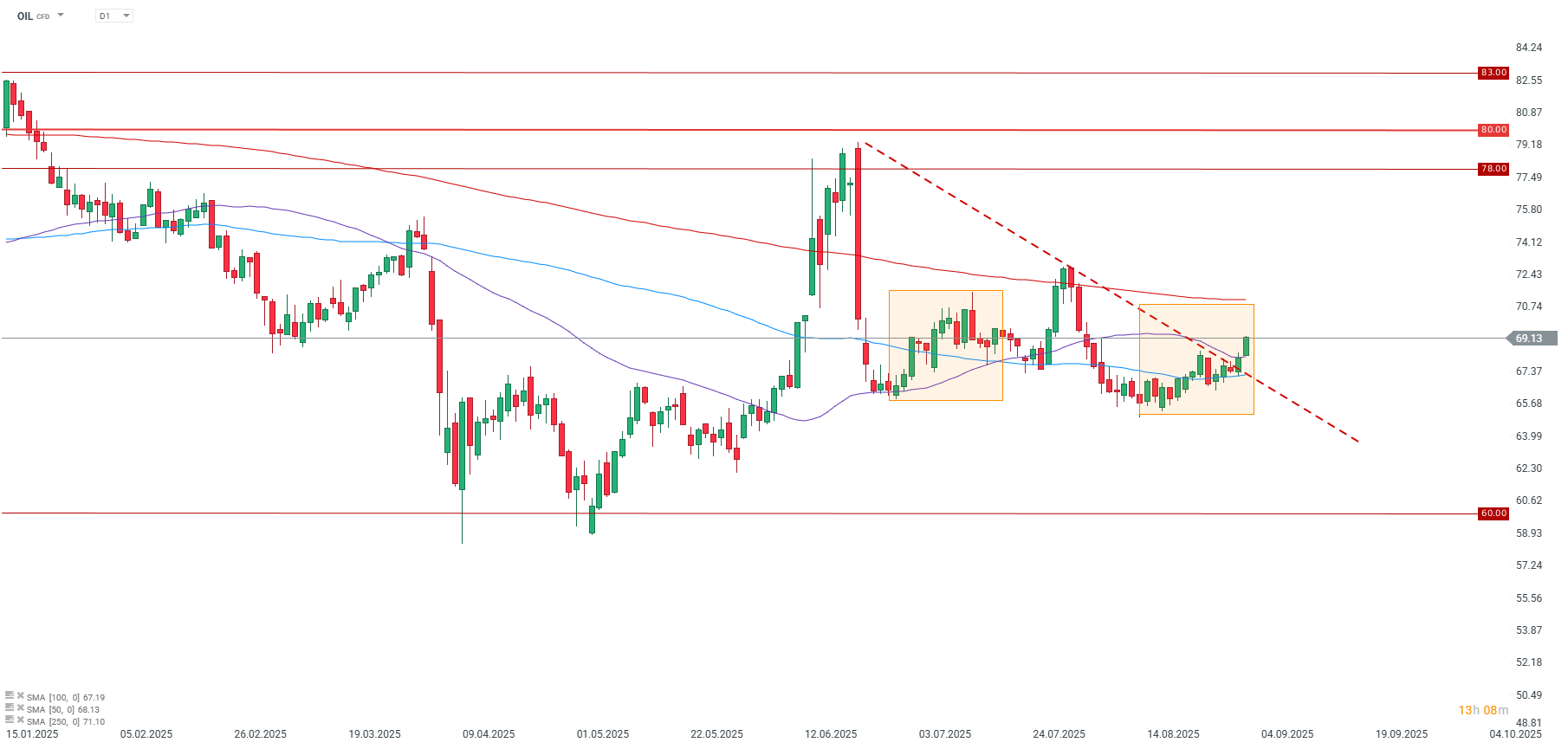
Brent crude today surpassed $69 per barrel, breaking above its 50-period moving average. Additionally, yesterday saw a breakthrough of the downtrend line. The current target for buyers could be around $70-$71 per barrel. Potential support lies around the 100-period moving average at $66-$67 per barrel. Source: xStation5.
Natural Gas
- Gas prices rose to $3/MMBtu last week due to a smaller-than-expected increase in inventories.
-
Demand data shows a significant drop, though production has also pulled back. The pace of consumption decline, however, is much stronger than that of production.
-
European gas inventories are rising but remain below the five-year average. If the heating season were to start earlier than usual, it could pose a problem for the upcoming winter.
-
Prices in Europe, however, remain low, just above €30/MWh.
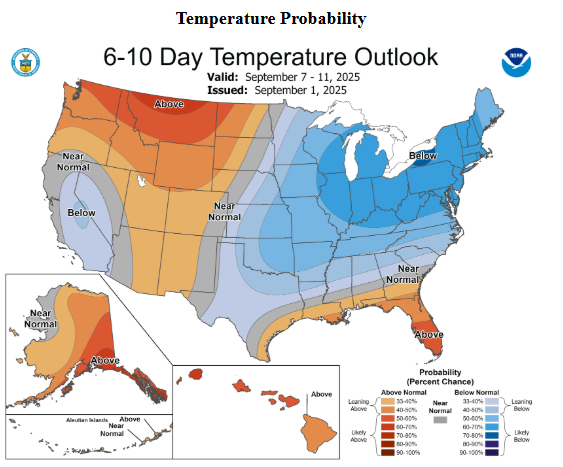
Temperatures in the second week of September are expected to be lower than normal in most places, which, during the cooling season that lasts until early October, will result in lower gas consumption. Source: NOAA.

Cooling degree days have returned to the five-year average, but since August 20, there has been a clear decline in the need for cooling in the United States. This suggests that we should see significantly lower gas consumption in the near future. Source: Bloomberg Finance LP, XTB.
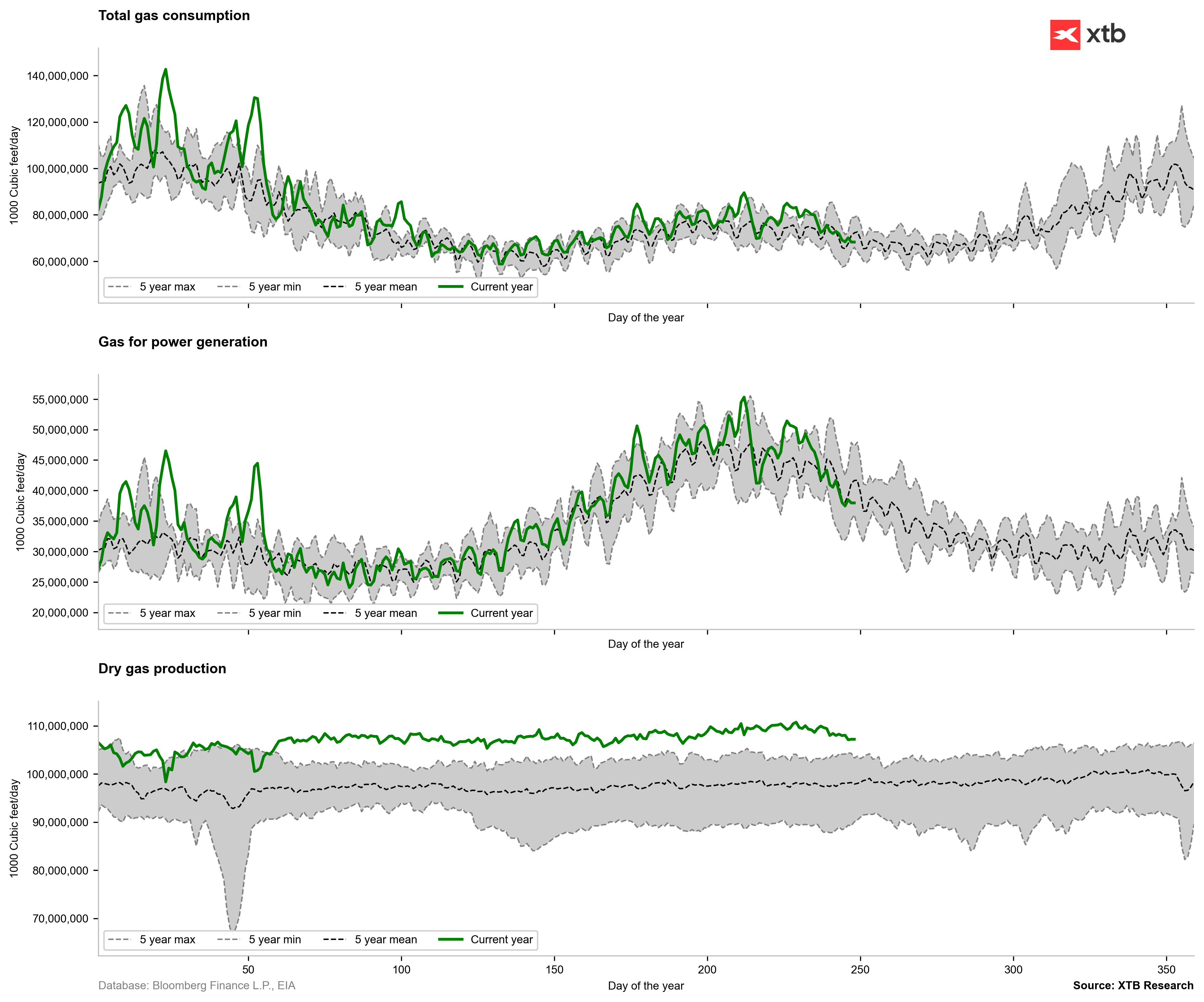
Gas consumption by power plants is clearly falling, but production is also declining. The pace of the production decrease is, however, significantly less than the drop in consumption, which should contribute to a larger increase in inventories. Source: Bloomberg Finance LP, XTB.
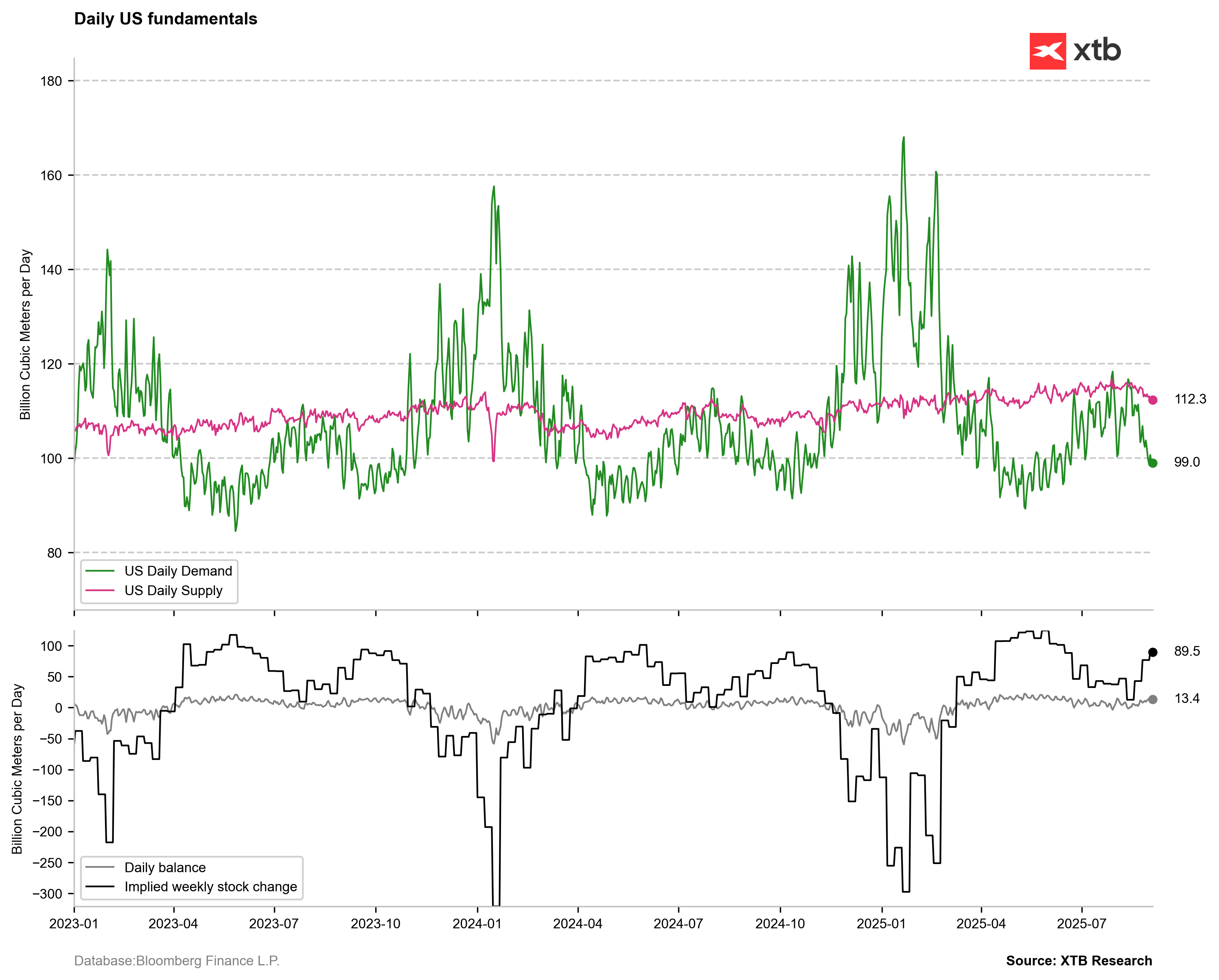
Even with the decline in available supply, the estimated change in inventories for the current week is already close to 100 Bcf (of course, a lot can still happen by the end of the week, but the pace of the decline in gas demand is currently very strong and is reminiscent of what we typically see in April). Source: Bloomberg Finance LP, XTB.
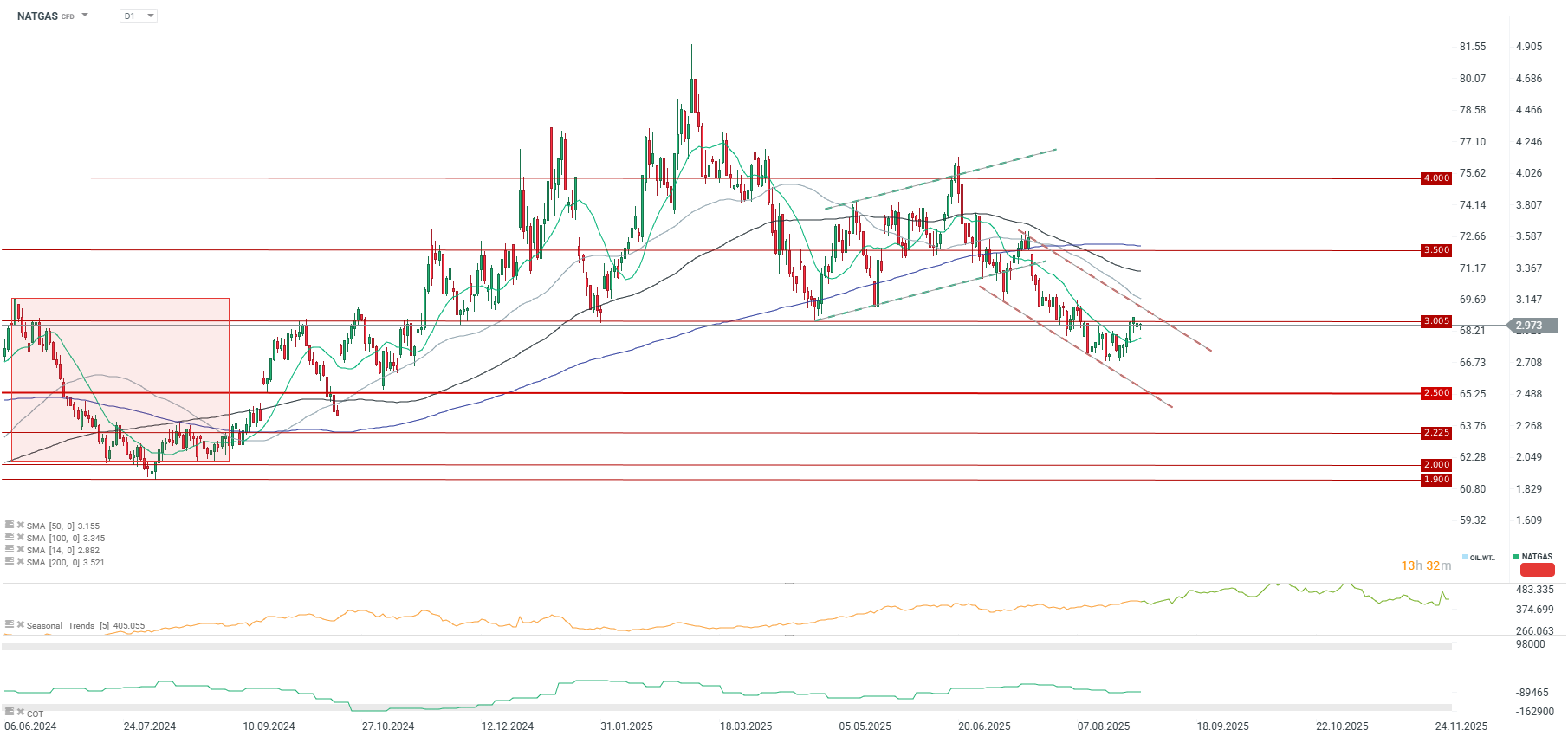
The price of gas rebounded significantly last week, reaching $3/MMBtu, which was linked to a smaller-than-expected increase in inventories. The price is currently approaching resistance at the 50-period moving average, which previously acted as resistance during a similar upward correction in July. Source: xStation5.
Silver
- Silver has surpassed $40 per ounce and is approaching $41 per ounce, marking its highest price since 2011.
-
China remains a key player in the silver market due to its position as a leader in solar panel production. However, there is a risk of market saturation within China itself, even as exports are growing strongly, not just to Europe but also to Africa.
-
The five largest solar panel companies in China recently laid off one-third of their staff, signaling growing problems in an industry where significant cost-cutting is taking place.
-
As Reuters noted in an article on September 1, the world currently produces twice as many photovoltaic panels annually as it uses, with most of them made in China.
-
Market oversaturation could, at some point, lead to a decline in production, which could in turn suggest problems for silver demand, especially given the huge price increases over the past few years.
-
Currently, however, we are seeing not only an increase in industrial demand but also in investment demand, including from ETFs.
-
The silver-to-gold price ratio has seen a sharp decline, which could also potentially signal an approaching end to silver's bull run. Nevertheless, the ratio stands at 86, while the 10-year moving average is 82. At a gold price of $3,500, this gives a silver price of $42.68 with a ratio of 82, and $43.75 with a ratio of 80, where the ratio has often fallen in recent months.
-
It is worth remembering, however, that during corrections, the price of silver falls faster than gold, so one can expect the ratio itself to rebound during a correction. If gold were to correct to $3,400 and the ratio were to rise to 90, it would imply a silver valuation of $37.7 per ounce.
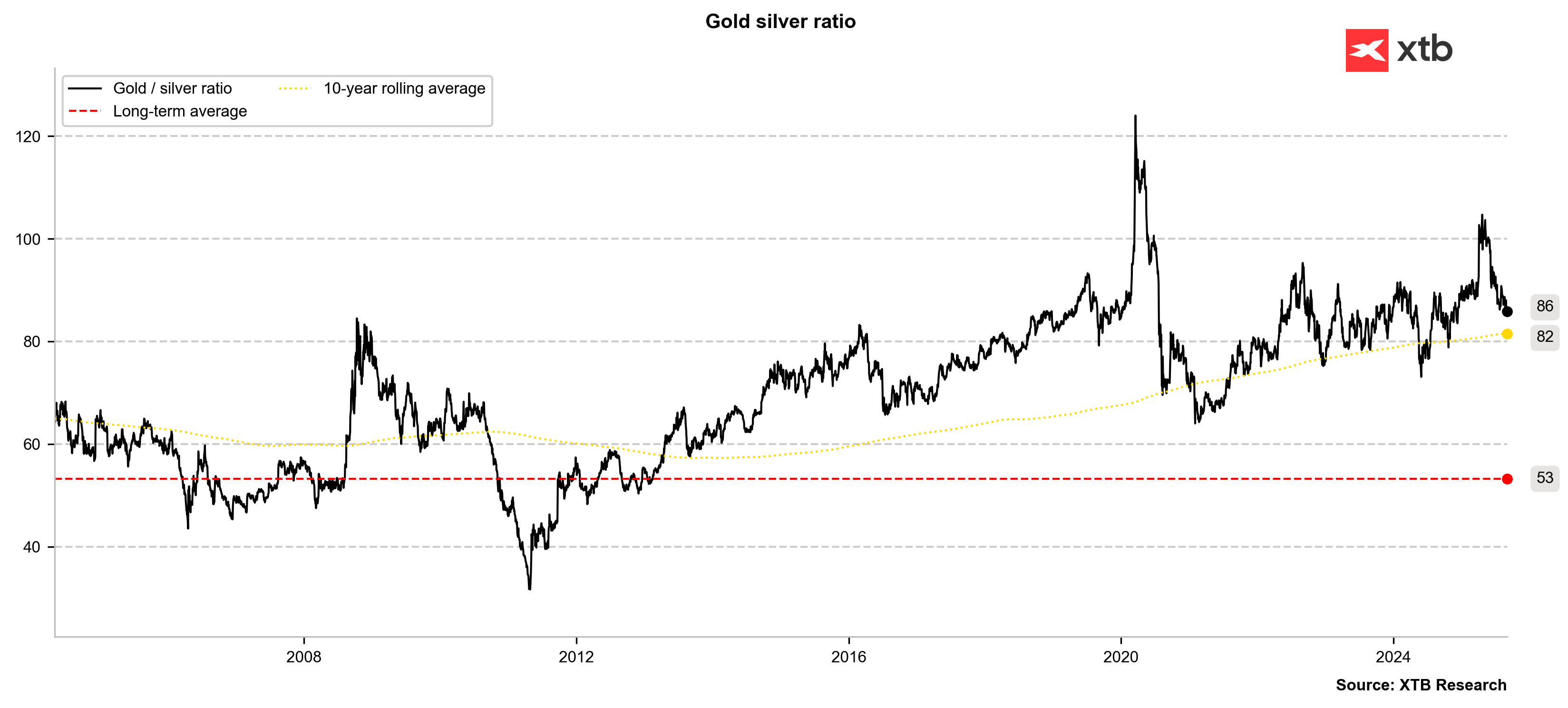
The gold-to-silver price ratio has seen a very strong retreat in recent weeks. While it remains at an elevated level, it's worth noting that in recent months, it has typically bottomed out around 80 points. The 10-year moving average is at 82 points. Source: Bloomberg Finance LP, XTB.
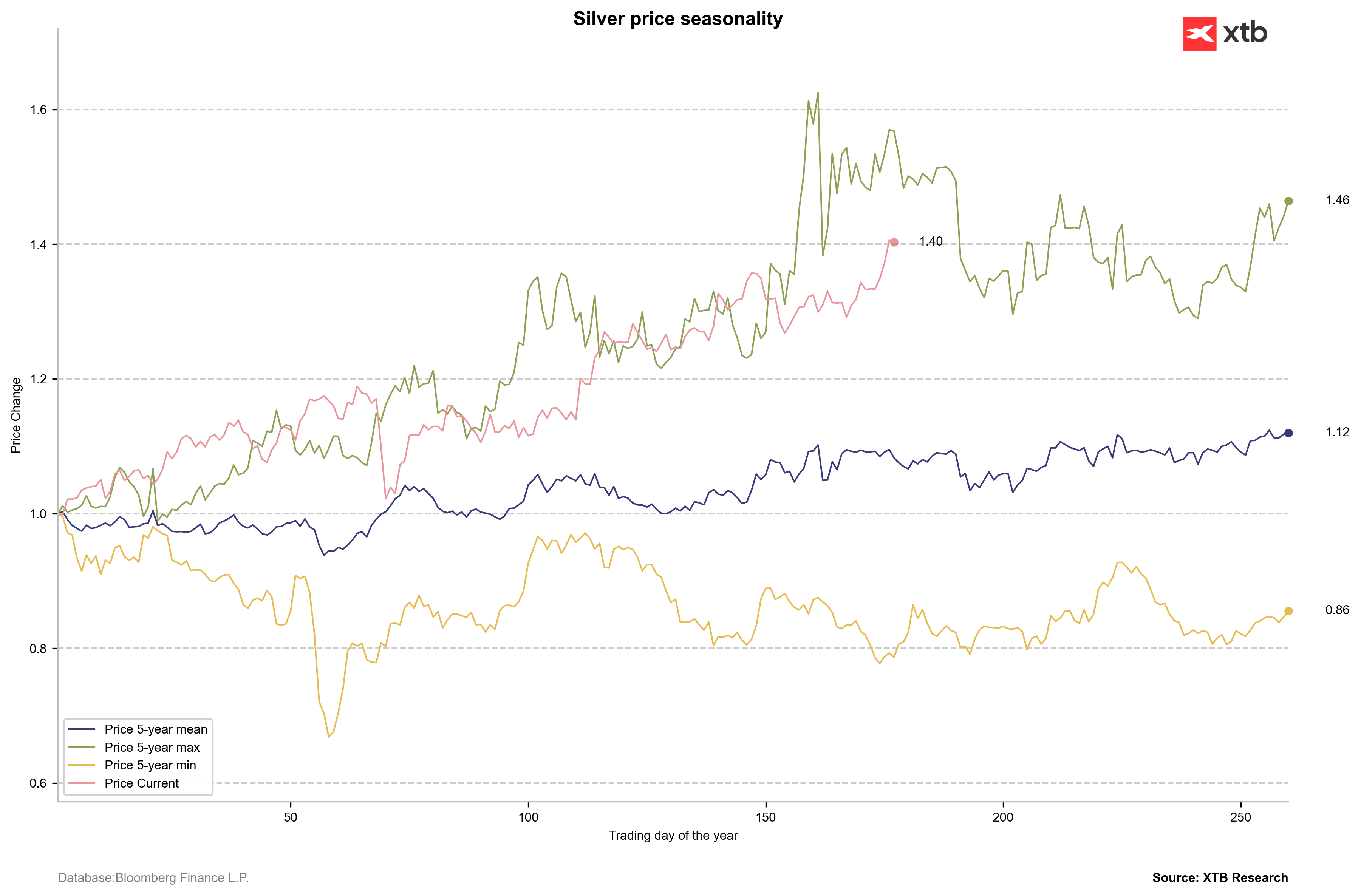
The increase in silver prices since the beginning of the year is already around 40%, making it one of the best years in over five years in terms of return. However, it's worth noting that the rest of the year, as seasonality shows, is quite volatile with no specific trend, unlike the first part of the year. Source: Bloomberg Finance LP, XTB.
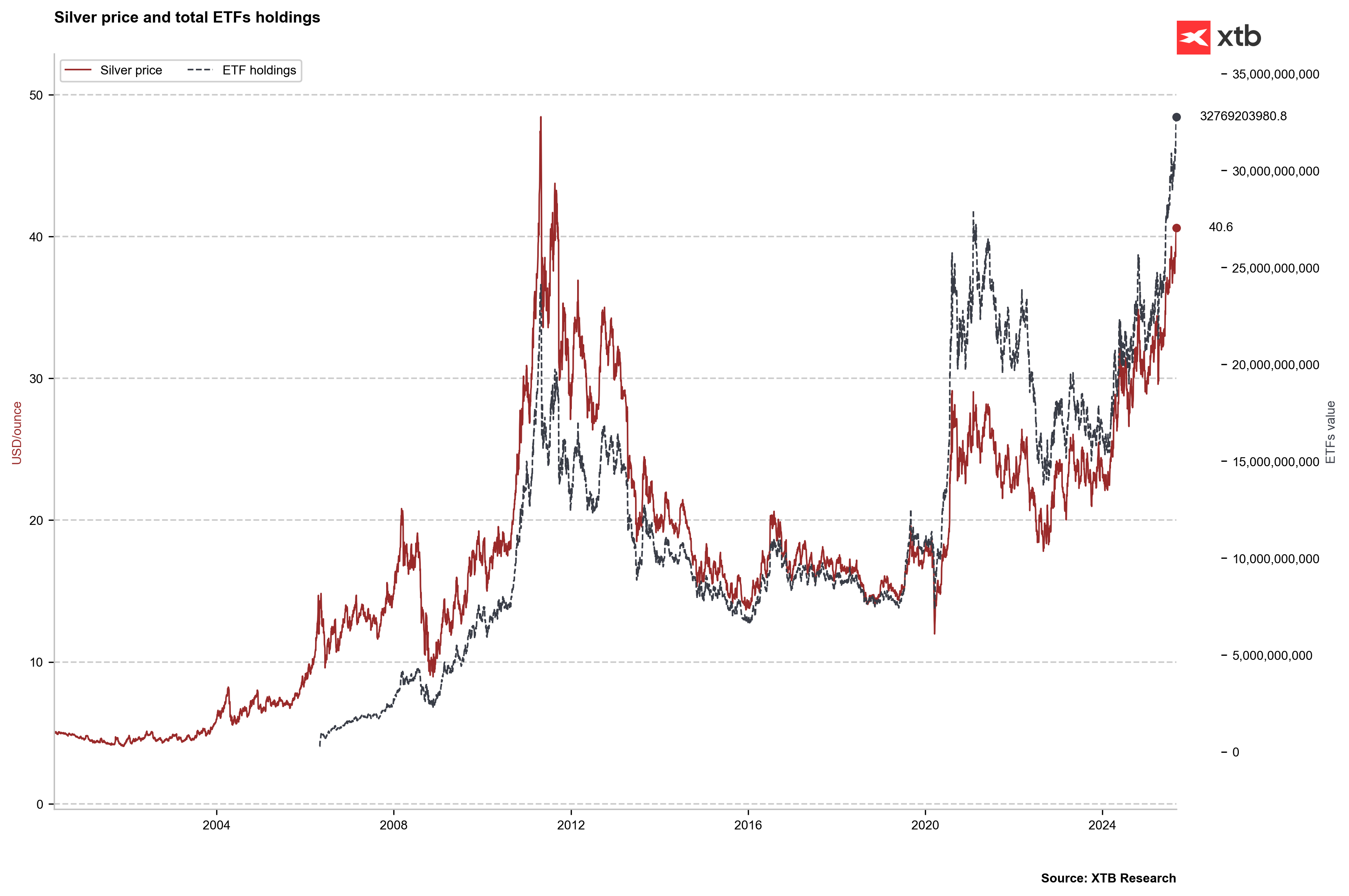
The total value of silver in ETFs is now almost $33 billion, a level significantly greater than in 2011, when silver prices reached their previous near-historical highs around $50 per ounce. Source: Bloomberg Finance LP, XTB.
Gold
- Gold closed at a new historical high on September 1, and on September 2, it reached new intraday historical highs, surpassing the levels from April 22.
-
Goldman Sachs, in its latest forecast, indicates that gold could reach as high as $4,000 per ounce by mid-2026 if ETF purchases continue at the current pace.
-
Purchases by central banks are also continuing, albeit at a slightly slower pace than in previous years. While the chances of reaching an annual demand of 1,000 tons are still quite high, the World Gold Council's latest report suggests a high probability of demand being slightly above 800 tons.
-
A key event for the gold market will be the Fed's decision, to be published on September 17. Currently, rising expectations of interest rate cuts are supporting gold prices. However, if it turns out to be a so-called "hawkish hike," a correction in gold cannot be ruled out.
-
Gold has been gaining recently due to the growing conflict between President Trump and the Fed, which led to the announcement of the decision to fire Fed Governor Cook. At the moment, the case is in court, and Cook remains employed until the court issues a decision.
-
Scott Bessent, the US Treasury Secretary, indicates that the Fed should remain independent but also stated that the central bank has made many mistakes recently. In his opinion, Trump had the right to fire Cook.
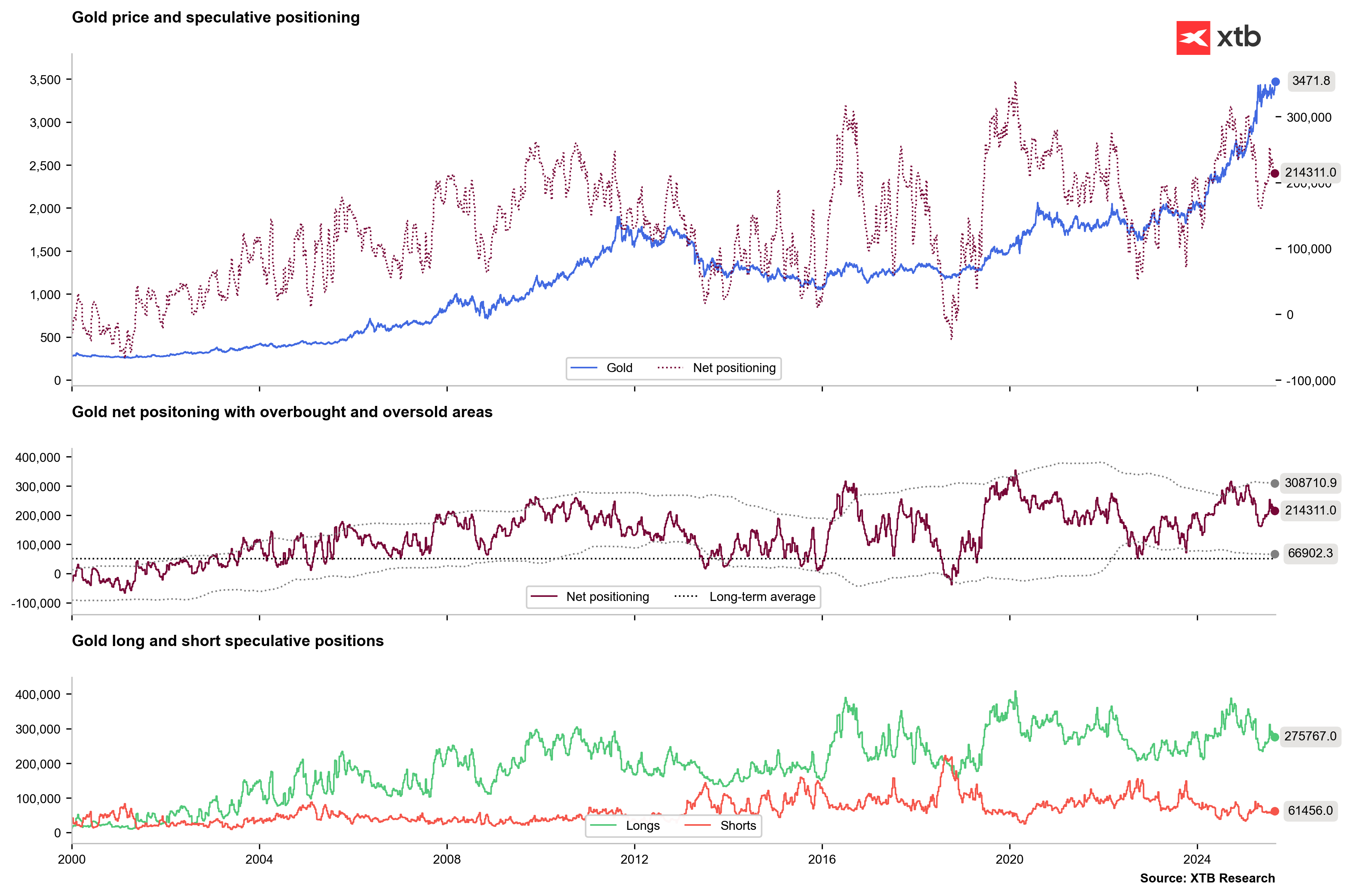
Gold is reaching historical highs, but on futures contracts as of last Tuesday, long positions among non-commercial investors were limited, indicating profit-taking. Looking at net positions, we can speak of neither overvaluation nor undervaluation. Source: Bloomberg Finance LP, XTB.
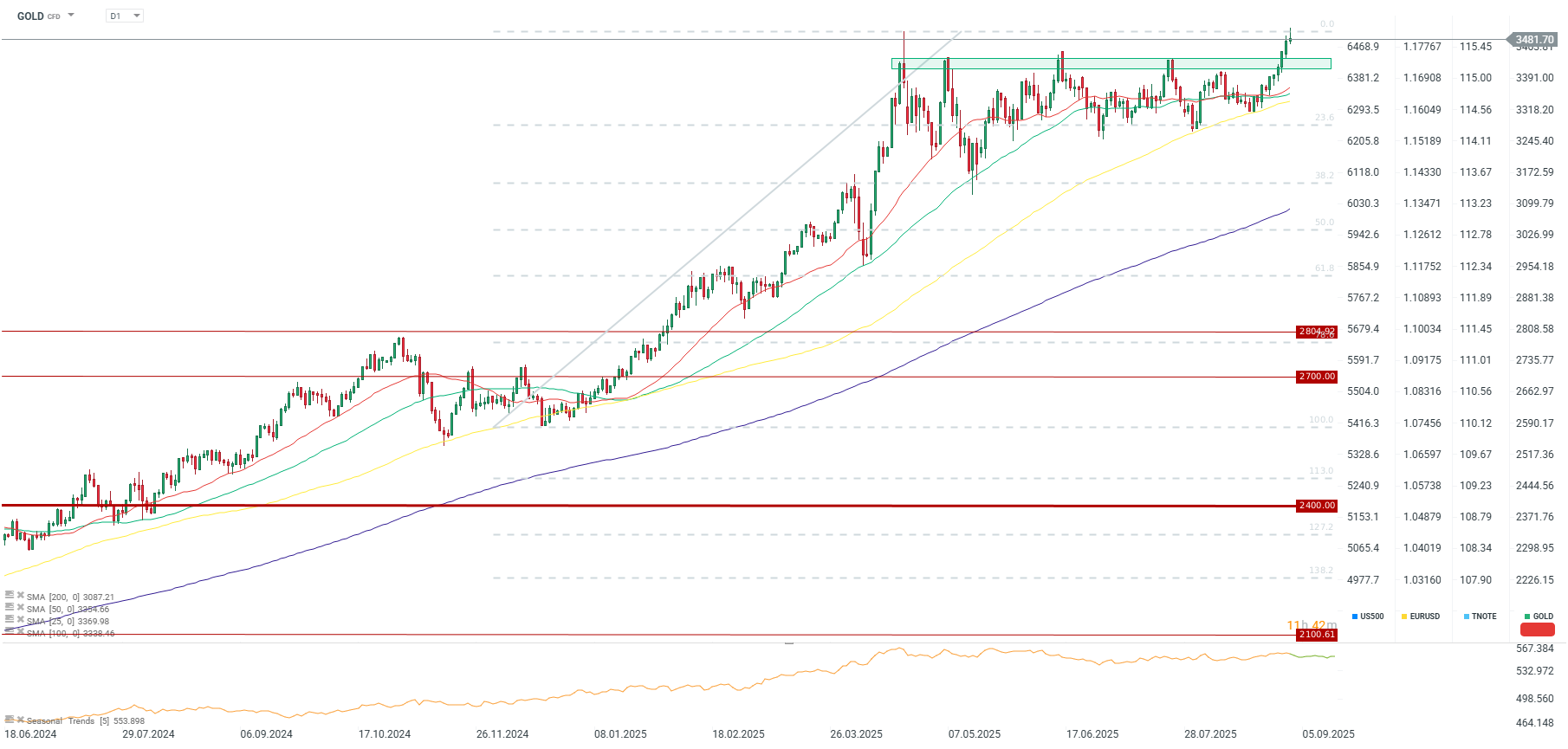
A streak of six consecutive days of gains is currently underway, though there was a clear pullback after setting historical highs this morning. Such long winning streaks are very rare in gold's history. The previous five-day streak occurred in January of this year, although the sixth session was merely a pause before a continuation of strong gains. Source: xStation5.
Daily summary: A green start to the new trading week 📈
NATGAS gains 12% 🚨📈
Tech review: earnings take centre stage as Apple reaches record high
GOLD returns to ATH levels 📈
This content has been created by XTB S.A. This service is provided by XTB S.A., with its registered office in Warsaw, at Prosta 67, 00-838 Warsaw, Poland, entered in the register of entrepreneurs of the National Court Register (Krajowy Rejestr Sądowy) conducted by District Court for the Capital City of Warsaw, XII Commercial Division of the National Court Register under KRS number 0000217580, REGON number 015803782 and Tax Identification Number (NIP) 527-24-43-955, with the fully paid up share capital in the amount of PLN 5.869.181,75. XTB S.A. conducts brokerage activities on the basis of the license granted by Polish Securities and Exchange Commission on 8th November 2005 No. DDM-M-4021-57-1/2005 and is supervised by Polish Supervision Authority.
